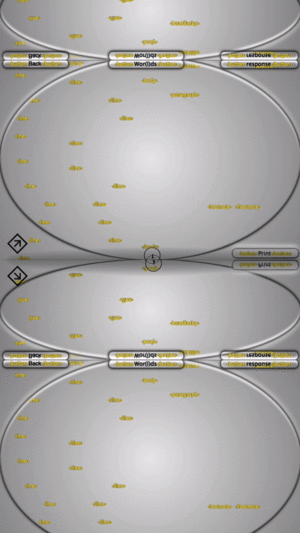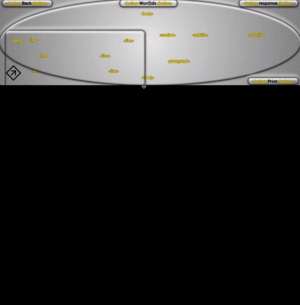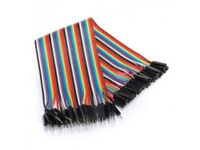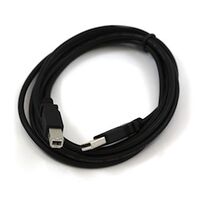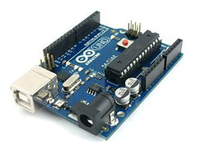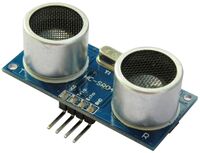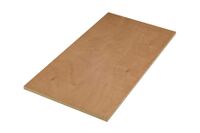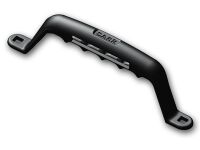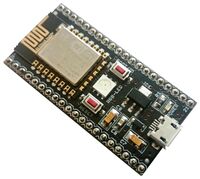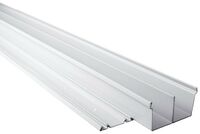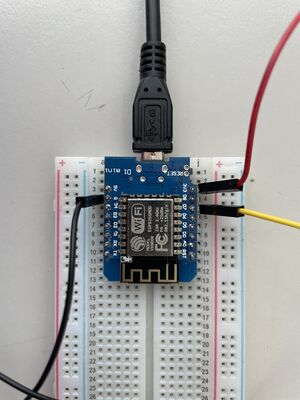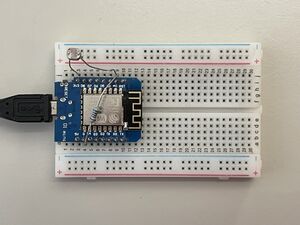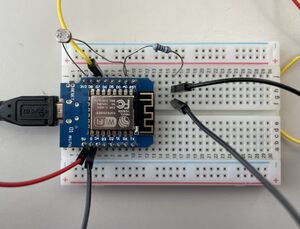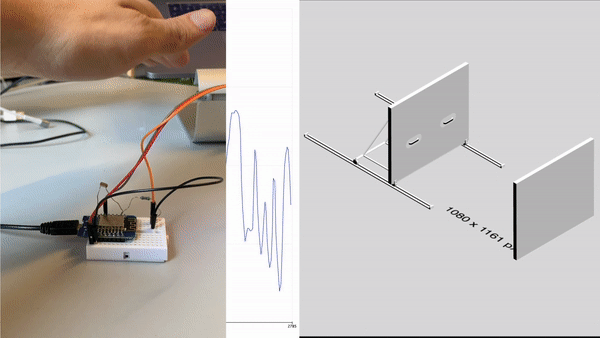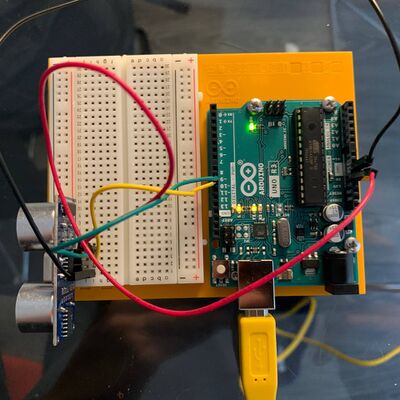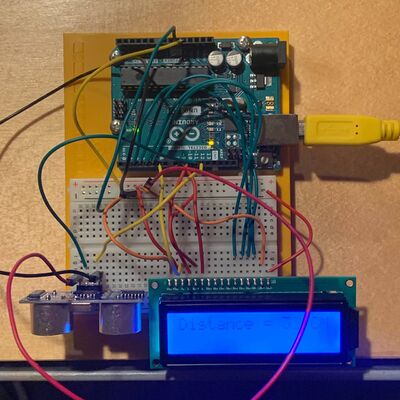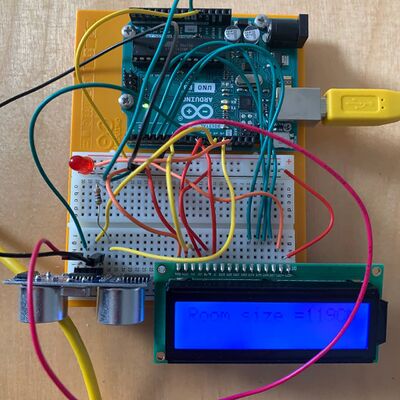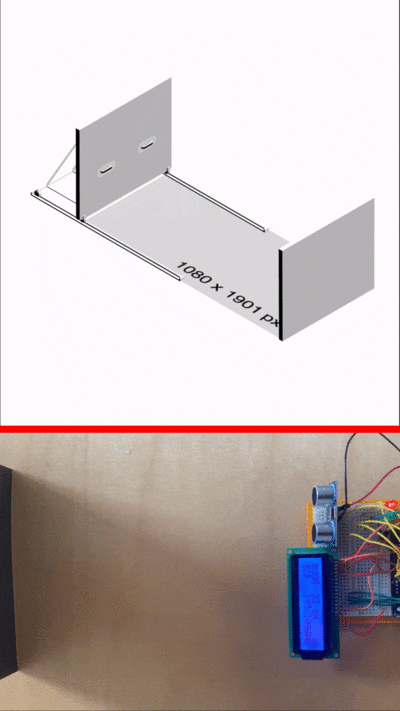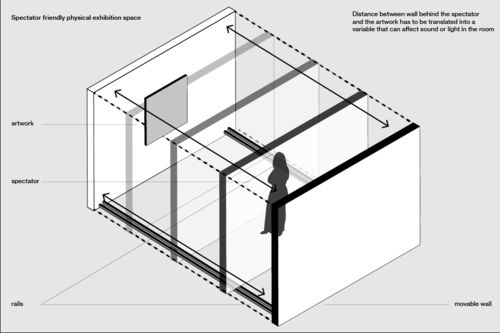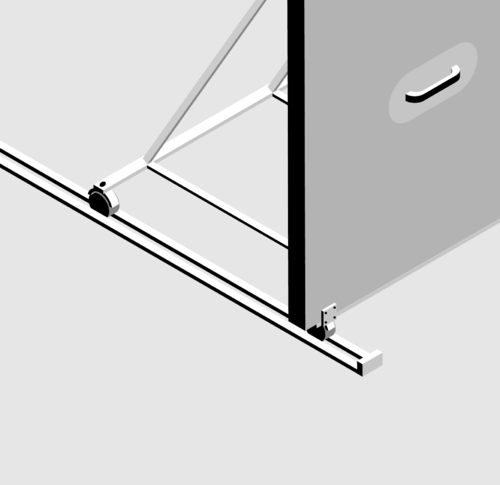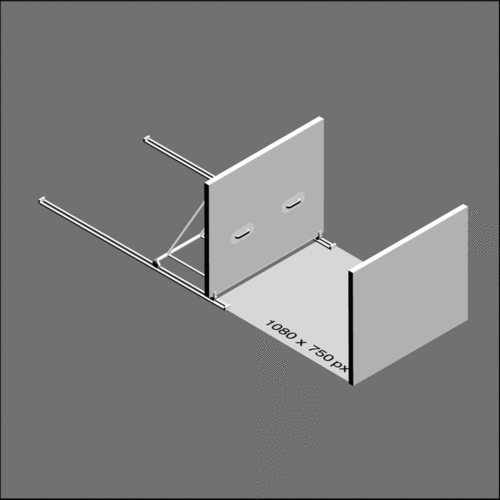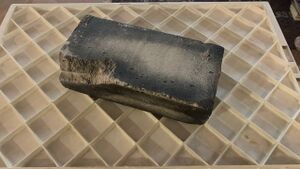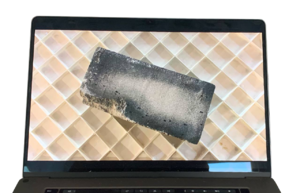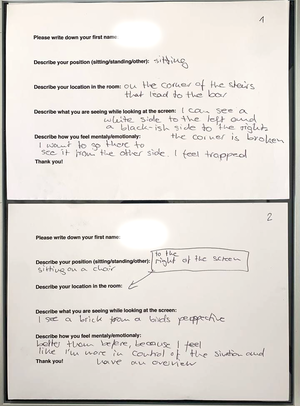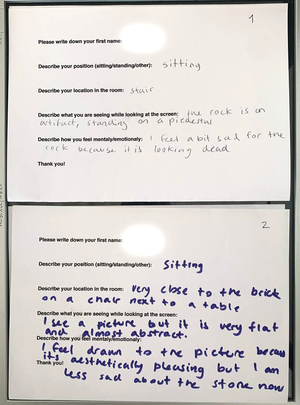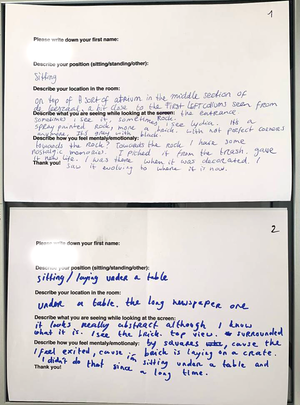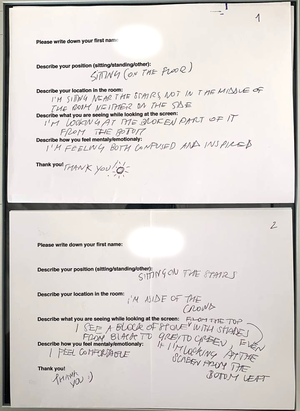XPUB2 Research Board / Martin Foucaut
Pads
Manetta / Michael
- Group meeting Michael - https://pad.xpub.nl/p/2021_sandbox
- Group discussion Michael/Manetta - https://pad.xpub.nl/p/20210928_xpub2
- 2nd Group discussion Michael/Manetta - https://pad.xpub.nl/p/2021-10-05-xpub2
- Aquarium — https://pad.xpub.nl/p/aquarium
- Post-Aquarium — https://pad.xpub.nl/p/2021-10-12-postaquarium
Steve / Marloes
- Graduate Seminar Session 1 — https://pad.xpub.nl/p/GRS_session1_20_21
- Graduate Seminar Session 2 — https://pad.xpub.nl/p/GRS7Oct21
- https://pad.xpub.nl/p/LB2_%26_XPUB2_introduction_to_the_Graduate_Research
- https://pad.xpub.nl/p/GRS7Oct21
- https://pad.xpub.nl/p/GRS_session_3_14_Oct_21
- https://pad.xpub.nl/p/Thesi_OutlinePlanSteve
Eleanor Greenhalgh
- Collaboration, Conflict & Consent - part 2 — https://pad.xpub.nl/p/2021-10-XPUB2-Nor
Seminars (source)
Key Dates and Deadlines
These are the key dates for 2021-22
- 19 November - Graduate Proposal Deadline
Last year's Graduate Proposals UPLOAD YOUR PROPOSAL HERE!
- 19 November - Thesis Outline Deadline
Last year's Thesis Outlines UPLOAD YOUR THESIS OUTLINE HERE!
- 3 Dec - Deadline First Chapter
- 18 Feb - Deadline First Draft Thesis
- 18 March - Deadline Second Draft thesis (texts to 2nd readers)
- 1 April - Deadlines Second readers' comments
- 14 April - DEADLINE THESIS
Guides and Guidelines
- A Guide to Essay Writing (including guide to Harvard method).
LB Code link (in progress)
About thesis
Thesis criteria
- Intelligibly express your ideas, thoughts and reflections in written English.
- Articulate in writing a clear direction of your graduate project by being able to identify complex and coherent questions, concepts and appropriate forms.
- Clearly structure and analyse an argument.
- Use relevant source material and references.
- Research texts and practices and reflect upon them analytically.
- Synthesize different forms of knowledge in a coherent, imaginative and distinctive way.
- Position one's own views within a broader context.
- Recognize and perform the appropriate mode of address within a given context.
- Engage in active dialogue about your written work with others.
Thesis format
- A report on your research and practice.
- An analytical essay exploring related artistic, theoretical, historical and critical issues and practices that inform your practice, without necessarily referring to your work directly.
- The presentation of a text as a body of creative written work.
Thesis Outline (guideline)
Don't make it more than 1500 words
What is your question?
Break the proposed text down into parts. Think of the separate sections as "containers" (this may change as you progress with the text but try to make a clear plan with a word count in place)
Thesis Outline (consider the following before writing the outline. Include all these points in the intro to the outline)
Conceptual Outline (what is your question? Try to be a specific as possible. More specific than identifying a subject or general interest. It helps to ask: "what questions does the work I make generate?")
Why do you want to write this text?
Outline of Methodology (for example: " I would like to structure my thesis in relation to the a series of interviews I will conduct for my proposed project" OR "I will make a 'close reading' of three of my past projects"
Time line (how will you plan your time between now and April)
- Introduction- overview
[500 words]
- Chapter 1
[2000 words]
- Chapter 2
[2000 words]
- Chapter 3
[2000 words]
- Conclusion [500 words]
=7000
Bibliography
Annotated bibliography (five texts max). Make a synopsis of 5 texts that will be central to your thesis.
- Example of annotated bibliography
https://pzwiki.wdka.nl/mediadesign/Mia/Thesis
- Example of a thesis outline:
#) https://pzwiki.wdka.nl/mw-mediadesign/images/f/f3/Thesis_outline_final_Yuching.pdf #1) https://pzwiki.wdka.nl/mediadesign/User:Zpalomagar/THESIS_OUTLINE/FIFTH_DRAFT
Referencing System
- Harvard Referencing system PDF
Graduate proposal guidelines
What do you want to make?
I wish to suggest a physical experience of the Web by conceiving an exhibition space whose properties could be direcly altered by the the spectator(s). In this way, I wish to give elasticity to architecture, unpredictability, and the spectators more freedom with regard to the spatial device. The possible alteration of the physical exhibition space should be the starting point of a narration about intersubjectivy both on the web and the physical world, and how much these supposed distincts worlds could actually be melting with each others in some kind of augmented reality.
How do you plan to make it?
On one hand, I will continue my research about the exhibition spaces and interfaces through art history and theory and understand they relate to each others. Both physical exhibition spaces and interface are spaces in which our actions and behaviour are sort of predefined, either by curators or by programmers, however there are also major differences between both of them. On the other hand, I will work a lot Arduinos and sensors, as wekk as conceiving the physical elements of the exhibition space such as the walls, rails, etc. My prototyping strategy could be to increase the scale of my woprk over time or to directly work at human scale. Meanwhile, both for theorical and production parts, I will ask help from teachers, curators, technicians, and a few friends in order to evolve on all aspects of this graduation project.
What is your timetable?
- 1st semester: starting from the very first hackpack that was made, buy, assemble and programm a Arduino with a ESP8266 module and a ultrasonic Sensor (HC-SR04), test it out with various things such as a bulb lamp, a speaker, a motor, or a beamer, and just see what happens. Meanwhile get started with conceiving and making a reduced scale model of the exhibition space I talked about. I with to introduce my ideas to both wood and metal workshop managers by showing this small scale prototype, and listen to their remarks and advice to move forward. The true purpose of this project should be clear before the end of this semester.
- 2nd semester: Start conception of this space at human scale by finding a space where I could work in for the rest of the year until the graduation. Ask, apply and find a definitive space to make this installation happen, eother in or outside of the school.
Why do you want to make it?
I believe that the better is a medium at "mediating", the more invisible and misconsidered it gets. This paradox puts in the position of giving more attention to what is containing, surrounding, holding or hosting what is supposed to be experienced, studied or contemplated.
Who can help you?
- About the project itself:
Reinaart Van Hoe apparently worked on a very similar project a while ago, I need to talk to him.
Stephane Pichard, old tutor, we worked together several years on conceptualizing installations and exhibitions spaces
- About creating the physical elements:
People in wood station
People in metal station
People in interaction station
- About Arduinos:
Dennis de Bel who introduced me to Arduino and willing to answer to my questions
Louisa Teichmann also working with Arduino for graduation, we are on the same path.
- About Theory:
Emmanuel Cyriaque, teacher, curator and my previous theorical tutor
- About writting and theory:
Rosa Zangenberg got a degree in art, media and society and can help me to write and get more references about my research.
Relation to previous practice
During the first part of my studies, my interest has been gradually driven by references, questions and practices that directly concerned the tools, formats and langages I was dealing with as a student. I believe that the better is a medium at "mediating", the more invisible, misunderstood and misconsidered it gets. This interesting paradox puts me in the position to focus on what is containing, supporting or hosting the subject that is supposed to be experienced. That is how I started to hijack some media and wished to transform them as the subjects of my works, in what could be eventually called 'meta-works'. During my last graduation, I started reflecting on the status of networked writing and reading by programming my thesis in the form of Web to Print website, subsequently translated in physical world as a printed book, a set of flags, and a series of installations. Finally and until now, I am getting gradually interested by the differences and ambiguities between physical exhibition spaces and web interfaces. Either curated or programmed, both are meant to influence our user/spectator behaviour in space and orientate our way to consume contents. However, while the exhibition space is quiet rigid and institutionalised, the web is more variable and unpredicatble.
After making a scenography willing to translate in a physical space; the texts, images from my previous online thesis under some sort of ‘physical interface’, I wish this time to consider the physical space as an elastic space, similar to a Web window, that could be resized by the spectator, affecting the display of the content and sort of diffracting the range of technological contexts and perspective in which are all experiencing as Web users.
Relation to a larger context
More broadly, I wish to question the modern conception of the physical exhibition space as an institutionalized, presivable and unalterable device. In that sense, I feel my project connect to the practice of institutional critique exposed by Hal Foster in After the White Cube; where she compares the museum as a mausoleum, the white cube with a form of art consumerism or entertainment of art.
References
- Stéphanie Moser, 2010. THE DEVIL IS IN THE DETAILS: MUSEUM - Displays and the Creation of Knowledge. 1st ed. Southampton, England
- Alexander R. Galloway - The Interface Effect 1st ed. Malden, USA: Polity Press.
- Jonas Lund, 2012. What you see is what you get
- Shilpa Gupta, 2009 - 2010. Speaking Wall
- Frederick Kiesler, 1925, City of space
Reading Sources
Themes (keywords)
- Museum Display vs Screen display
- Exhibition space vs User interface
- Web Elasticy vs Physical Rigidity
- Museology
- Media archeology vs Net Art
- Exhibiting parameters vs Technological context
- Mediatization of Media / Meta Art
Draft Thesis
Introduction
[...] Open Question(s):
- How much does the technological/politcal context can affects our user/spectator experience
- Why suggesting a physical experience of the Web interfaces
[...]
I. Conditions, contexts and experiences of the spaces of representation
1. THE USER & SPECTATOR CONDITION
What defines our condition and freedoms as a user or spectator
1.1 The user condition through the Web
1.1.1 Terms, conditions and agreements
Cookies, privacy, legal uses, copyrights, etc
1.2 The spectator condition through the architecture
1.2.1 Rules, safety, regulations
Artwork safety, public safety, prohibed items, public speaking, photography, equipments, behavior, circulation, etc. Being gallery/museum visitor implies to agree on terms and conditions that are quiet heavy in comparison to visiting a Web page.
- See Louvres Visitors rules: https://www.louvre.fr/en/visit/museum-rules
2. CONTEXTS
What define our viewing contexts on digital interfaces and in exhibition spaces
2.1 Technological contexts
2.1.1 A network of factors / Technological contexts / Point of views
On the Web, the render/display of same Web page is always slighly different from a user’s to another. It depends on the technological and spatial context in which each user in situated. This context is made of many factors, such as the device used, its configuration (addons/plugins/custom settings/luminosity/scale), the IP adress, the browser used, its versions among an almost infinite list of other parameters. All theses factors added together creates a very singular context to which the Web and its contents are forced to adapt.
Ref:
2.1.2 Elasticity, obsolescence and unpredictability / Responsive technology
In that sense the Web materiality is sort of elastic (see: plasticity), which makes it singularily different from most physical objects or achitectures. Added to that, the display and functionalities of a website are also affected by the constant evolution of the Web itself, with patches, updates, expired and added elements that contribute to the ephemerality and unpredictability of what can be seen.
In order to overcome the impredicatability of rendering online interfaces among the incredible diversity of connected devices, a technology of flexibility has been developped, improved and democratised on the Web.
Ref:
Gaëlle Calvary, Joëlle Coutaz, David Thevenin
Quentin Limbourg, Nathalie Souchon, Laurent Bouillon, Murielle Florins, Jean Vanderdonckt
See more:
- Lopez, J.F., Szekely, P., Web page adaptation for Universal Access, in Proc. of Conf. on Universal Access in HCI UAHCI’ 2001
(New Orleans, August 5-10, 2001), Lawrence Erlbaum Associates, Mahwah, 2001,
2.2 Technological contexts in the museum/exhibition space
2.2.1 Space and agents of the production of knowledge
Architecture, scale, size, interior design, colors, layout, writing, arrangement, lighting, display, etc
- Stéphanie Moser, 2010. THE DEVIL IS IN THE DETAILS: MUSEUM - Displays and the Creation of Knowledge Doc. 1st ed. Southampton, England
2.2.2 Institutional critique
Questioning and redifining the exhibition spaces and the heritage from the White Cube
- From the Critique of Institutions to an Institution of Critique - Andrea FraserDoc
- After the White Cube. ref
3. THE USER/SPECTATOR EXPERIENCE
3.1 Experience vs Entertainment vs Consumerism of Art
What defines the experience of Art? Are exhibition spaces conceived as priviliged spaces for the art consumption? Are they meant as spaces of entertainment?
Ref:
- After the White Cube. ref 2015 NOTES INSIDE
Experience of interpretation = Entertainment of Art, Museum vs Mausoleum
- http://nt2.uqam.ca/fr/biblio/spaces-experience-art-gallery-interiors-1800-2000 Spaces of Experience: Art Gallery Interiors from 1800 – 2000] ref NOTES INSIDE
Art vs 50's consumerism / Choregraphy of desire? Check theorists Hermann von Helmholtz and Wilhelm Wundt
3.2 The Digital experiences
3.3 The Physical experience=
3.3 Experience // Interpretation // Context
II. Articulating paradoxes
1. THE PHYSICAL INTERFACE
1.1 Architectural Device
Conceiving the architecture as a technological device
1.2 Physical Interface
Conceiving the exhibition space as a digital interface
1.3 Programmed physical space
Conceiving the exhibition as a programmed space (instead of curated)
1.4 Exhibition User
Conceiving the spectator as a user
1.5 Variable Display
Conceiving the physical space as an elastic/variable and potentially unpredicatable display; in order to diffract the range of possible point of view/experiences/interpretations offered by the Web.
2. MEDIATIZING THE MEDIA
2.1 The medium paradox
The better it mediates, the more it becomes invisible. How does our attention make abstraction of the frame, the medium, the form.
Ref
- bootlegAlexander R. Galloway - The Interface Effect 1st ed. Malden, USA: Polity Press.
- The interface paradox
- The less they do, the more they achieve and the more they become invisible & unconsidered
- The interface as a "significant surface"
- The interface as a gateway
- The interface as "the place where information moves from one entity to another"
- The interface as the media itself
- The interface as "agitation or generative friction between different formats"
- The interface as "an area" that "separates and mixes the two worlds that meet together there"
2.2 Meta-Space
An exhibition, and artwork, or a media that is nested in itself as a subject. How could meta art be a strategy in order to deal with the interface paradox. References to previous practices: TENSE, MEDIA SPACES
Ref
- The meta as an aesthetic category Bruno Trentini (2014)
Conclusion
[...]
References
- Stéphanie Moser, 2010. THE DEVIL IS IN THE DETAILS: MUSEUM - Displays and the Creation of Knowledge. 1st ed. Southampton, England
- Alexander R. Galloway - The Interface Effect 1st ed. Malden, USA: Polity Press.
- Jonas Lund, 2012. What you see is what you get
- Shilpa Gupta, 2009 - 2010. Speaking Wall
- Frederick Kiesler, 1925, City of space
Notes (old)
The exhibition space as a frame
Our attention is naturally drawn to the content of a work of art, whether it is a painting, a sculpture or an installation. But do we pay enough attention to what delimits it, circumscribes it or defines it as a work of art? Just like the frame of a painting, the exhibition space does not merely highlight what it exhibits, but literally establishes the status of a work of art, a work that can be exhibited, purchased or collected.
User environment on the Web ≠ Spectator environment in physical exhibition space
Spotlighting the User/Spectator interface viewing situations to bring out an absence of uniformity in our user persepctive on the Web, which differs from what we could see in a physical space such as the streets, exhibition space, printed matters, etc. Elastic User Interface Versus Rigid Physical exhibition Space, what does it change in our experience/approach of the contents themselves [See Media Spaces].
Attemps to create modular/flexible exhibitions space are still meaningful? [See Frederick Kiesler] Diffract and make use of the range of user interface viewing situations into a singular sound tool [See Web Oscillator/Civil Entertainment Sirens]
Why flag is such a fascinating media, why is it really special? It is a figurative form of the entity represented; which is often where the flag is positioned physically. Taking it, destroying it, removing it, unfolding it, or letting in stand down a pole are some of the many gestures that can become higly symbolic too. Can flags have any other purpose than symbolizing, probably so (meanwhile have a look at this for example).
On the web: individualized spaces/environments; hyperplasticity; impredicatability; obsolescence
On the Web, the render of same Web page always differs from a user’s Web interface to another, and this, from the very first moment the page is accessed (default settings), no matter what kind of interaction could be engaged between the user and its interface. Even if the contents (text and images) stay the same for everyone, the size; scale; layout; luminosity; hierarchy; etc will always be very likely different depending on the user’s device default settings, and also depending on the custom configurations/addons/plugins she/he/it/they may have applied to it. In a way, this hyper-plasticity of the Web creates a very unique and individualized spaces/environments for the user to navigate through.
In order to overcome the impredicatability of rendering online interfaces among the incredible diversity of connected devices, an adaptability technology was implemented and then widely democratised in the developers' toolbox (see). The fact remains that all parameters cannot be fully considered or mastered, as they are almost innumerable, growing and obsolete in the long term (Updates, Flash player; etc).
In physical space: uniformized/institutionalized spaces/environments; sustainability; predictability
This differs from what can be seen in the physical exhibition space where we engage our bodies and look through an environment which remains the same for everyone. Only our var bodies can move in a position: ‘fixed’ space. The walls, lighting, artwork position, and the circulation are very calculated and institutionalized. In the physical space, there are most likely no possible alteration that can be engaged by the spectator to any of these parameters, everything is curated and stable.
Dealing with the interface paradox
I want to deal with the paradox of the interface being a necessarily invisible and unconsidered mediator. Because the better it mediates, the more it errase itself. Consequence of that is that a great range of parameters are quiet naturally misconsidered.
Questions
- What if? The technology of flexibility or/and user friendliness was translated/emulated into the physical exhibition space to give the chance to any spectator to generate a customized context surrounding the artwork itself? How could it affect the experience of art itself. See Experiment 1
- What if? A same page would produce a different continuous sound depending on the way it is rendered on your very own user interface. What would happen if these devices would be puted next to each others with sound on.
In the internet space, the alteration of the format dimensions will most certainly affect the shape of the content being viewed. In the physical exhibition space, what would happen then if the walls could move? Would this affect the position of the work or the light in the room?
Connections with other student(s) work(s)/research(s) from XPUB2
from PAD
Kendal is mentioning:
- Internet spaces
- Obsolete internet
- physical vs digital
Naami talks about:
- how would u define ‘user’ in web context?*
- user experience*
- how do we feel familiarity or unfamiliarity in a website?
- ’me’ and ‘my autonomy’ in web context?
- website as a space*
- and user or visitor or (in)habitants in the web space*
Floor is writting:
- How not to loose the details.
Camillo is questioning:
- Way(s) to publish as an artist.*
Open problematics
from PAD
- What if a Web page was emulated into a physical exhibition space?
- What if the settings of a physical exhibition (design, color, light, architecture, space, light, font, display, layout, circulation) could be altered by the viewer(s)/spectator(s)?
- How much influential are these parameters in the user/viewer experience/interpretation?
- Is an exhibition space related to a form of entertainment/Consumption of art/design/etc?
- How can the internet space help phyisical exhibition spaces to get out of White Cube hegemony?
Connections to XPUB1
User viewing contexts (on the Web) from special issue 13
Description
Create motion from the diffraction of the user interface which offers flexible and almost infinite possible renders of a same Web page. The sensible variety of user viewing contexts tells about the placiticy of the user interface. This is the result from the wide range user devices, window or screen sizes, Web browsers, (as part of many other parameters). A first of movement capture and montage of the user interface placticity can be as part of the post-production of my interpretation of the esssay "Tense", part of the Special Issue 13.
Capturing and puting into motion the User interface placticity
Trying to play around with the Browser window resizing in order to create a playful animation decidaced be a thumbnail of the project. The two first screen capture will be the basis of the upcoming motion. I will first try to smooth the window movement and make the two screen capture fit togehter before synchronizing them and looping them.
Notes: Add Web Oscillator
Prototyping
Concept
Early sketch that is about comparing and questioning our Spectator experience of a physical exhibition space (where everything is often fixed and institutionalized), with our User experience of a Web space (where everything is way more elastic, unpredictable and obsolete). I’m interested about how slighly different can be rendered a same Web page to all different users depending on technological contexts (device nature, browser, IP address, screen size, zoom level, default settings, updates, luminosity, add-ons, restrictions, etc). I would like to try to create a physical exhibition space/installation that would be inspired from the technology of a Web user window interface in order then to play with exhbitions parameters such as the distance between the spectator and the artwork, the circulation in space, the luminosity/lighting of the artwork(s), the sound/acoustics, etc etc etc.
Distance between wall behind the spectator and the artwork has to be translated into a variable that can affect sound or light in the room.
Wall position could be connected to the dimensions of a user interface in real time with arduino and a motor.
Pre-Prototyping
Create a connected telemeter with an Arduino, a ultrasonic Sensor (HC-SR04) and a ESP8266 module connected to Internet
It seems possible to create your own telemeter with a arduino by implementing an ultrasonic Sensor HC-SR04
By doing so, the values capted by the sensor could potentaialy be directly translated as a variable.
Then with the ESP8266 module, the values could be translated on a database on the internet.
Then I could enter that website and see the values from anywhere and use them to control light, sound or anything else I wish.
Tool/Material list:
- Telemeter (user to get the distance between the device and an obstacle)
- Rails
- Handles
- Wheels
- Movable light wall
- Fixed walls
- USB Cable
- Connexion cables
- Arduino
- ESP8266
About the ultrasonic Sensor (HC-SR04)
Characteristics
Here are a few of it's technical characteristic of the HC-SR04 ultrasonic sensor :
- Power supply: 5v.
- Consumption in use: 15 mA.
- Distance range: 2 cm to 5 m.
- Resolution or accuracy: 3 mm.
- Measuring angle: < 15°.
Ref More infos about the sensor here and here
Where to buy the ultrasonic Sensor (HC-SR04)
- 1piece = 9,57 € - https://fr.shopping.rakuten.com/offer/buy/7112482554/module-de-mesure-a-ultrasons-hc-sr04-capteur-de-mesure-de-distance-5v-pour.html?t=7036&bbaid=8830210388
- 20 pieces = 34,22 € - https://fr.shopping.rakuten.com/offer/buy/7112482554/module-de-mesure-a-ultrasons-hc-sr04-capteur-de-mesure-de-distance-5v-pour.html?t=7036&bbaid=8830210388
Prototyping with Arduino
Getting started
During a workshop, we started with a very basic fake arduino kit, a led, a motor, and a sensor. After making a few connections, we got to understand a bit how it works.
#include <Servo.h> Servo myservo; // create servo object to control a servo int pos = 0; // variable to store the servo position int ldr = 0; // vairable to store light intensity
void setup() {
Serial.begin(9600); // begin serial communication, NOTE:set the same baudrate in the serial monitor/plotter
myservo.attach(D7); // attaches the servo on pin 9 to the servo object
}
void loop() {
//lets put the LDR value in a variable we can reuse
ldr = analogRead(A0);
//the value of the LDR is between 400-900 at the moment
//the servo can only go from 0-180
//so we need to translate 400-900 to 0-180
//also the LDR value might change depending on the light of day
//so we need to 'contrain' the value to a certain range
ldr = constrain(ldr, 400, 900);
//now we can translate ldr = map(ldr, 400, 900, 0, 180);
//lets print the LDR value to serial monitor to see if we did a good job Serial.println(ldr); // read voltage on analog pin 0, print the value to serial monitor
//now we can move the sensor accoring to the light/our hand! myservo.write(ldr); // tell servo to go to position in variable 'pos' delay(15); }
Split Screen Arduino + Sensor + Serial Plotter + Responsive Space
Trying here to show the simutaneous responses between the sensor, the values, and the simualtion.
Arduino uno + Ultrasonic Sensor + LCD Display Experiments
Now that my arduino kit and sensors arrived, I will be working on a series of first experiments in order to understand how sensors work, how to optimize them, and how to display the values on the LCD screen display that was part of my starter kit.
Sketch 1
For this very simple first sketch and for later, I will include newPing library that improves a lot the ultrasonic sensor capacities.
#include <NewPing.h>
int echoPin = 10;
int trigPin = 9;
NewPing MySensor(trigPin, echoPin); //This defines a new variable
void setup() {
// put your setup code here, to run once:
Serial.begin(9600);
}
void loop() {
// put your main code here, to run repeatedly:
int duration = MySensor.ping_median();
int distance = MySensor.convert_in(duration);
Serial.print(distance);
Serial.println("cm");
delay(250);
}
Sketch 2: Arduino Uno + Sensor + LCD (+ LED)
All together from https://www.youtube.com/watch?v=GOwB57UilhQ
#include <LiquidCrystal.h>
LiquidCrystal lcd(10,9,5,4,3,2);
const int trigPin = 11;
const int echoPin = 12;
long duration;
int distance;
void setup() {
// put your setup code here, to run once:
analogWrite(6,100);
lcd.begin(16,2);
pinMode(trigPin, OUTPUT); // Sets the trigPin as an Output
pinMode(echoPin, INPUT); // Sets the echoPin as an Input
Serial.begin(9600); // Starts the serial communication
}
void loop() {
long duration, distance;
digitalWrite(trigPin,HIGH);
delayMicroseconds(1000);
digitalWrite(trigPin, LOW);
duration=pulseIn(echoPin, HIGH);
distance =(duration/2)/29.1;
Serial.print(distance);
Serial.println("CM");
delay(10);
// Prints the distance on the Serial Monitor
Serial.print("Distance: ");
Serial.println(distance);
lcd.clear();
lcd.setCursor(0,0);
lcd.print("Distance = ");
lcd.setCursor(11,0);
lcd.print(distance);
lcd.setCursor(14,0);
lcd.print("CM");
delay(500);
}
From this sketch, I start considering that the distance value could be directly sent to a computer and render a Web page depending on its value.
Note: It looks like this sensor max range is 119cm, which is almost 4 times less than the 4 meters max range stated in component description.
Sketch 3: Arduino Uno + Sensor + LCD + 2 LED) = Physical vs Digital Range detector
Using in-between values to activate the green LED
Once again, puting together the simulation and the device in use.
#include <LiquidCrystal.h>
#include <LcdBarGraph.h>
#include <NewPing.h>
LiquidCrystal lcd(10,9,5,4,3,2);
const int LED1 = 13;
const int LED2 = 8;
const int trigPin = 11;
const int echoPin = 12;
long duration; //travel time
int distance;
int screensize;
void setup() {
// put your setup code here, to run once:
analogWrite(6,100);
lcd.begin(16,2);
pinMode(trigPin, OUTPUT); // Sets the trigPin as an Output
pinMode(echoPin, INPUT); // Sets the echoPin as an Input
Serial.begin(9600); // Starts the serial communication
pinMode(LED1, OUTPUT);
pinMode(LED2, OUTPUT);
}
void loop() {
long duration, distance;
digitalWrite(trigPin,HIGH);
delayMicroseconds(1000);
digitalWrite(trigPin, LOW);
duration=pulseIn(echoPin, HIGH);
distance =(duration/2)/29.1; //convert to centimers
screensize = distance*85;
Serial.print(distance);
Serial.println("CM");
Serial.print(screensize);
delay(10);
if ((distance >= 15) && (distance<=20))
{
digitalWrite(LED2, HIGH);
digitalWrite(LED1, LOW);
}
else
{
digitalWrite(LED1, HIGH);
digitalWrite(LED2, LOW);
}
// Prints the distance on the Serial Monitor
Serial.print("Distance: ");
Serial.println(distance);
lcd.clear();
lcd.setCursor(0,0);
lcd.print("ROOM");
lcd.setCursor(6,0);
lcd.print(distance);
lcd.setCursor(9,0);
lcd.print("cm");
lcd.setCursor(0,2);
lcd.print("SCR");
lcd.setCursor(6,2);
lcd.print(screensize);
lcd.setCursor(9,2);
lcd.print("x1080px");
delay(500);
}
[Soon] Sketch 3: Arduino Uno + Sensor + LCD + Buzzer/Piezo
For this upcoming sketch I will implement a buzzer that will emit a specific sound depending on the distance of the obstacle detected by the sensor. WIP
Ressources:
- https://samsneatprojectblogcode.blogspot.com/2016/06/piezo-buzzer-code-and-fritzing.html
- https://www.youtube.com/watch?v=m7bbfzZ2UNo
- https://www.youtube.com/watch?v=K8AnlUT0ng0
[Soon] Sketch 4: Arduino Uno(?) + Sensor + LCD + ESP8266
The goal here is to interconnect a web page to the ultrasonic sensor values in order to make a user web window dimensions react to the evovling dimensions of the exhibition space.
About the ESP8266 module
The ESP8266 is a microcontroller IC with Wi-Fi connection, it will allow us to connect the arduino to the internet so we can get the values obtained from sensors received directly on a self-hosted webpage. From this same web page, it would also be possible to control LESs, motors, LCD screens, etc.
Ressources about ESP8266 module
Kindly fowarded by Lousia:
- https://www.youtube.com/watch?v=6hpIjx8d15s
- https://randomnerdtutorials.com/getting-started-with-esp8266-wifi-transceiver-review/
- https://www.youtube.com/watch?v=dWM4p_KaTHY
- https://randomnerdtutorials.com/esp8266-web-server/
- https://www.youtube.com/watch?v=6hpIjx8d15s
- https://electronoobs.com/eng_arduino_tut101.php
- http://surveillancearcade.000webhostapp.com/index.php (interface)
Which ESP8266 to buy
- https://makeradvisor.com/tools/esp8266-esp-12e-nodemcu-wi-fi-development-board/
- https://randomnerdtutorials.com/getting-started-with-esp8266-wifi-transceiver-review/
Where to buy
Problem(s)
- I got a recurrent and unsolved problem with the USB Modem that sometimes is not detected or available on the Arduino Interface. Found quiet some discussions about this online, but solving it looks definitively complex.
- The harduino board is getting too small for implemeting all elements I need (Buzzer, Sensor, LEDs), I need a longer one or another one.
To purchase
- Breadboard 830 points - Transparent https://www.tinytronics.nl/shop/en/tools-and-mounting/prototyping-supplies/breadboards/breadboard-830-points-transparent
- Breadboard wires 65 pieces - various sizes https://www.tinytronics.nl/shop/en/cables-and-connectors/cables-and-adapters/prototyping-wires/dupont-compatible-and-jumper/breadboard-wires-65-pieces-various-sizes
Movable wall
Ressources
- Movable walls build out for Art Museum of West Virginia University link
- Gallery Wall System (GWS) link
- CASE-REAL installs movable walls inside a basement art gallery in tokyo link
Simulation(s)
Prototyping Ressources
Do it Yourself Ressources (from Dennis de Bel)
- Instructables is a huge source of (written) tutorials on all kinds of topics. Keep in mind it's more quantity than quality. Interesting for you might be 'diy sensors'
- Hand Made Electronic (Music): Great resource for cheap, diy electronics project focussing on
sound/music (pdf findable online)
- Make: Electronics: Amazing, complete guide to everything 'electronics' (Warning, HUGE pdf)
- Thingiverse: The place to find 3d printable mechanics, enclosures, parts etc.
Electronic Shops (physical)
- Radio Twenthe (Den Haag)
- Radio Piet (Arnhem)
LIST OF SHOPS (also more physical NL ones)
Electronic Webshops (NL)
- https://www.tinytronics.nl/ (semi physical, pickup only in Eindhoven)
- http://www.newtone-online.nl/catalog/
- https://www.brigatti.nl/
Electronic Webshops (Rest)
- Conrad (Germany, expensive)
- TME (Poland, cheap, ridiculously difficult website)
- Segor (Germany)
- Mouser (Germany)
- Reichelt (Germany)
- Farnell (Germany/UK)
- Digi-key (USA, fast but expensive shipping + tax)
- Tayda (Thailand/USA, 2-3 weeks shipping)
- A liexpress (China, 2-3 weeks shipping)
PCB making EU (Expensive)
- Eurocircuits (Germany)
- Aisler (Germany, 1 week from design upload to in your hands, very high quality)
- Leiton (Germany)
PCB making China (Cheap but import tax)
- JLCPCB (1 week from design upload to in your hands, low quality solder mask)
- PCBWAY (1 week from design upload to in your hands)
- ALLPCB (1 week from design upload to in your hands)
Arduino and Sensors
- https://www.floris.cc/shop/en/19-starter-kits
- https://www.tinytronics.nl/shop/nl/arduino/kits/arduino-starter-kit
- https://www.conrad.nl/p/makerfactory-beginnersset-voor-arduino-1612782
Sensor only Kit
- 45-in-1 (aliexpress) Example sensor you will find in such a kit documented here
Arduino Starter Projects
or slightly more complex:
or in videos:
or just many different ideas:
or - of course - on Instructables if you want to have a complete course:
or this course:
ARDUINO + PROCESSING (visualizing sensors)
MISCELANIOUS KEYWORDS and LINKS
- citizen science, for example: https://www.meetjestad.net/
- https://forensic-architecture.org/
Installation Simulations
Venues
Introduction
We will organize 2 moments of shared work in progress: one in October, one in November. It is not necessarily a presentation, but more conversation-based in order to practice the "making public act". Speak about our work, conversations with people about it, and people talking about our work.
Venue 1: Aquarium
Description
AQUARIUM 1.0
A Small Ecosystem for Living Thoughts
Monday, 11th October
19:30 – 21:30
Leeszaal Rotterdam West
Rijnhoutplein 3, 3014 TZ Rotterdam
with Clara Gradel, Floor van Meeuwen, Martin Foucaut, Camilo Garcia, Federico Poni,
Nami Kim, Euna Lee, Kendal Beynon, Jacopo Lega and Louisa Teichmann
It’s oh-fish-ial! Students of the Experimental Publishing Master invite you to dive into their small ecosystem of living thoughts. Join us for an evening of conversation, discussion and new view points. If you look closely, you might even see some early thesis ideas hatching. Let's leave no rock unturned.
Observation questionnaire
This exercice is a very small, humble and almost 100% analog exercice questioning representation in two small steps.
1st step
- 1st step: I give a sheet of paper to people during the venue and ask them to answer a series of questions concerning the object (brick) that is being displayed in the middle of the room on a podium. It is specified to them that they can be anywhere while observing this brick and in any position. Here are the quesitons:
- Please write down your first name:
- Describe your position (sitting/standing/other):
- Describe your location in the room:
- Describe what you are seeing while looking at the screen:
- Describe how you feel mentaly/emotionaly:
2nd step
- 2nd step: I take the answers, wait a round, and then give back a new sheet of paper to the same people with the exact same questions concerning the respresentation of the object (brick) that is being displayed in the middle of the room on a computer screen on the same podium.
Answer Samples
1.0 Object on a podium
- 1.1 Sitting on corner stairs —> Want to see it from different angles —> Feeling trapped, frustrated
- 1.2 Sitting on stairs —> a rock looking dead —> Feeling sad
- 1.3 Sitting on the left close from columns —> rational observation —> Nostalgic memories because participated to the creation of the object as it looks right now
- 1.4 Sitting in front of object —> Calm and slighly confused
- 1.5 Sitting on the floor next to stairs in between the side and the middle —> Looking at the object from the bottom —> Feeling a bit confused and inspired
2.0 Photo of the object displayed on a computer screen placed on a podium
- 2.1 Sitting on a chair seeing the brick from a bird perspective -> Feeling more control of the situation
- 2.2 Sitting very close from the brick —> Seeing a flat and almost abstract picture —> Feeling drawn to the picture, aesthetically pleasing, feeling less sad about the object
- 2.3 Sitting under a table very far way —> Looking abstract but identifiable —> Exited about the unusual and childish observation position
- 2.4 Sitting on stairs —> and seeing the brick in 2D —> Feeling fine
- 2.5 Sittiing on the stairs —> Seeing a side of the screen with a top view photo of the object —> Feeling confortable
Readings (new)(english)(with notes in english)
About Institutional Critique
To read
→ 1. Art and Contemporary Critical Practice: Reinventing Institutional CritiqueDoc
→ 2. From the Critique of Institutions to an Institution of Critique - Andrea FraserDoc
→ 3. Institutional critique, an anthology of artists writings - Alexander AlberroDoc
About Techno-Solutionism
To read
→ 1. The Folly of Technological Solutionism: An Interview with Evgeny Morozov - Natasha Dow Schüll
About Meta
To read
→ 1. The meta as an aesthetic category Bruno Trentini (2014)
→ 2. File:RMZ ARTIST WRITING(2).pdf The eye tells the story by Rosa Maria Zangenberg (2017)
→ 3. Leonardo Da Vinci - Paragone by Louise Farago
About exhibition space
To read
→ 2. Kluitenberg, Eric, ed. Book of imaginary media. Excavating the dream of the ultimate communication medium. Rotterdam: NAi Publishers, 2006.
→ 3. The wall and the canvas: Lissitzky’s spatial experiments and the White Cube
→ 6. Decorative Arts: Billy Al Bengston and Frank Gehry discuss their 1968 collaboration at LACMA by Aram Moshayedi
→ 8. File:Resonance and Wonder STEPHEN GREENBLATT.pdf Resonance and Wonder - STEPHEN GREENBLATT
→ 9. A Canon of Exhibitions - Bruce Altshuler File:A Canon of Exhibitions - Bruce Altshuler.pdf
→ 10. Documenta - File:A BRIEF HISTORY OF AN EXHIBITION AND ITS CONTEXTS - Klaus Siebenhaar.pdf A BRIEF HISTORY OF AN EXHIBITION AND ITS CONTEXTS - Klaus Siebenhaar
→ 11. Pallasmaa - The Eyes of the Skin File:Pallasmaa - The Eyes of the Skin.pdf
→ 12. Venturi - Learning from Las Vegas File:Venturi - Learning from Las Vegas.pdf
→ 13. Preserving and Exhibiting Media Art: Challenges and Perspectives - JULIA NOORDEGRAAF, COSETTA G. SABA; BARBARA LE MAÎTRE; VINZENZ HEDIGER
Copyright: 2013 - Publisher: Amsterdam University Press Series: Framing Film
Reading/Notes
→ 1. After the White Cube. ref 2015 NOTES INSIDE
- How and why White Cube rised and became democratized
- White Cube // Consumerism = Art Consumerism?
- Exhibition Space > Artworks
- Experience of interpretation = Entertainment of Art?
- Museum vs Mausoleum
→ 2. Spaces of Experience: Art Gallery Interiors from 1800 – 2000 ref NOTES INSIDE
- Art vs 50's consumerism / Choregraphy of desire?
- Check theorists Hermann von Helmholtz and Wilhelm Wundt
→ 3. Colour Critique A Symposium on Colour as an Agent for Taste, Experience and Value in the Exhibition Space NOTES INSIDE
May 24, 2019 - Noise! Frans Hals, Otherwise, Frans Hals Museum
→ 4. Noise! Frans Hals, Otherwise NOTES INSIDE
- Role of colours in the viewer's experience of an exhibition
- Institutional Critique
- Institutionalised Space / White cube
→ 5. Mental Spaces - Joost Rekveld/Michael van Hoogenhuyze NOTES INSIDE
(course for Artscience 2007/8)
doc
- About perspective
- About Space time
- About Cyber Space
→ 6. THE DEVIL IS IN THE DETAILS: MUSEUM - Displays and the Creation of Knowledge Doc NOTES INSIDE
Stephanie Moser SOUTHAMPTON UNIVERSITY (MUSEUM ANTHROPOLOGY) 2010
- Architecture (Neoclassical buildings)
- Big vs Small exhibition Space
- Lined up objects vs non systematic display
- Architecture/Design
- Gallery interiors (Ceiling/Interior Design elements/Furniture
- Colors
- Individual lighting of objects vs global lighting
- Dark vs Bright lighting
- Chronological vs Thematic arrangement
- Academic vs Journalistic writting
- Busy layout vs Minimal Layout
- Exibition seen vs other exhibitions
- Themed/idea-oriented vs objectled exhibitions
- Didactic vs discovery exhibition
- Contextual, immersive, or atmospheric exhibitions
- Audience vs Reception
→ 7. Fantasies of the Library - Etienne Turpin (ed.), Anne-Sophie Springer (ed.) Ref; Editeur: The MIT Press; Date de publication: 1 sept. 2018
- How the a physical organization influence of a bookshelf can influence it's digital version
- The book as a minitaure gallery/exhibition space
- The library as a public place of reading
- Library vs Exhibition Space = Use vs Display
- Book-theme exhibitions
About User Interface
Readings/Notes
→ 1. bootlegAlexander R. Galloway - The Interface Effect 1st ed. Malden, USA: Polity Press.
- The interface paradox
- The less they do, the more they achieve and the more they become invisible & unconsidered
- The interface as a "significant surface"
- The interface as a gateway
- The interface as "the place where information moves from one entity to another"
- The interface as the media itself
- The interface as "agitation or generative friction between different formats"
- The interface as "an area" that "separates and mixes the two worlds that meet together there"
→ 2. bootleg Nick Srnicek - Navigating Neoliberalism: Political Aesthetics in an Age of Crisis NOTES INSIDE
Editeur: medium.com, Date de publication: 20 oct. 2016
- From an aesthetic of sublime into an aesthetics of the interface
- Cognitive mapping
→ 3. bootleg Program Or Be Programmed - Ten Commands For A Digital Age Douglas Rushkoff NOTES INSIDE
Douglas Rushkoff, A., 2010. Program Or Be Programmed - Ten Commands For A Digital Age Douglas Rushkoff. 1st ed. Minneapolis, USA: OR Books.
- "Instead of learning about our technology, we opt for a world in which our technology learns about us."
- Programmed by the interfaces
- From a transparent to an opaque medium
→ 4. bootlegThe Best Interface Is No Interface - Golden Krishna NOTES INSIDE
Krishna, G., 2015. The Best Interface Is No Interface: The simple path to brilliant technology (Voices That Matter). 1st ed. unknown: New Riders Publishing.
- "Screen Obsessed Approach to Design"
- UI vs UX
→ 5. Plasticity of User Interfaces:A Revised Reference Framework NOTES INSIDE
Gaëlle Calvary, Joëlle Coutaz, David Thevenin
Quentin Limbourg, Nathalie Souchon, Laurent Bouillon, Murielle Florins, Jean Vanderdonckt
- About the term 'Placticity'
→ 6. Interface Critique- Beyond UX - FLORIAN HADLER, ALICE SOINÉ; DANIEL IRRGANG DOC Florian Hadler, Alice Soiné, Daniel Irrgang
- The interface as an "historical artifact", a "space of power"
- The interface as human -machine boudary
- What is interface critique
- Interface in computer science
- The screen for Lev Manovitch
More to read/see
→ 1. Bickmore, T.W., Schilit, B.N., Digestor: Device-
Independent Access To The World Wide Web, in Proc. of 6th
Int. World Wide Web Conf. WWW’6
(Santa Clara, April
1997)
→ 2. Bouillon, L., Vanderdonckt, J., Souchon, N., Recovering
Alternative Presentation Models of a Web Page with VAQUITA,
Chapter 27, in Proc. of 4th Int. Conf. on Computer-
Aided Design of User Interfaces CADUI’2002
(Valenciennes,
May 15-17, 2002)
→ 3. Calvary, G., Coutaz, J., Thevenin, D., Supporting Context
Changes for Plastic User Interfaces: a Process and a
Mechanism, in “People and Computers XV –
Interaction
without Frontiers”, Joint Proceedings of AFIHM-BCS Conference
on Human-Computer Interaction IHM-HCI’2001(Lille, 10-14 September 2001)
→ 4. Cockton, G., Clarke S., Gray, P., Johnson, C., Literate Development:
Weaving Human Context into Design Specifications,
in “Critical Issues in User Interface Engineering”,
P.
Palanque & D. Benyon (eds), Springer-Verlag, London,
1995.
→ 5. Graham, T.C.N., Watts, L., Calvary, G., Coutaz, J., Dubois,
E., Nigay, L., A Dimension Space for the Design of Interactive
Systems within their Physical Environments, in Proc. of
Conf. on Designing Interactive Systems DIS’2000
(New
York, August 17-19, 2000,), ACM Press, New York, 2000,
→ 6. Lopez, J.F., Szekely, P., Web page adaptation for Universal
Access, in Proc. of Conf. on Universal Access in HCI UAHCI’
2001
(New Orleans, August 5-10, 2001), Lawrence
Erlbaum Associates, Mahwah, 2001,
→ 7. Thevenin, D., Coutaz, J., Plasticity of User Interfaces:
Framework and Research Agenda, in Proc. of 7th IFIP International
Conference on Human-Computer Interaction Interact'
99
(Edinburgh, August 30 - September 3, 1999),
Chapman & Hall, London, pp. 110-117.
→ 8. Thevenin, D., Adaptation en Interaction Homme-Machine:
Le cas de la Plasticité, Ph.D. thesis, Université Joseph Fourier,
Grenoble, 21 December 2001.
About User Condition
Readings
→ 1. The User Condition 04: A Mobile First World - Silvio Lorusso Doc
- Most web user are smarphone users
- How "mobile's first" affect global web design
- How "mobile's first" affect the way we use computers
Readings (old)(mostly french)(with notes in french)
Books (old)
→ 1. L'art comme expérience — John Dewey (french) ⚠️(yet to be filled)⚠️
publisher: Gallimard (1934)
→ 2. L'œuvre d'art à l'époque de sa reproductibilité technique — Walter Benjamin (french
publisher: Alia (1939)
→ 3. La Galaxie Gutemberg — Marshall McLuhan (french)
publisher: University of Toronto Press (1962)
→ 3. Pour comprendre les médias — Marshall McLuhan (french)
publisher: McGraw-Hill Education (1964)
→ 4. Dispositif — Jean-Louis Baudry (french)
publisher: Raymond Bellour, Thierry Kuntzel et Christian Metz (1975)
→ 5. L’Originalité de l’avant-garde et autres mythes modernistes — Rosalind Krauss (french) ⚠️(yet to be filled)⚠️
publisher: Macula (1993)
→ 6. L'art de l'observateur: vision et modernité au XIXe siècle — Jonathan Crary (french)
publisher: Jacqueline Chambon (Editions) (1994)
→ 7. Inside the White Cube, the Ideology of Gallery Space — Brian O'Doherty (english) ⚠️(yet to be filled)⚠️
publisher: Les presses du réel (2008)
→ 8. Préçis de sémiotique générale — Jean-Marie Klinkenbeg (french) ⚠️(yet to be filled)⚠️
publisher: Point (2000)
→ 9. Langage des nouveaux médias — Lev Manovitch (french) ⚠️(yet to be filled)⚠️
publisher: Presses du Réel (2001)
→ 10. L'empire cybernétique — Cécile Lafontaine (french)
publisher: Seuil (2004)
→ 11. La relation comme forme — Jean Louis Boissier (french)
publisher: Genève, MAMCO(2004)
→ 12. Le Net Art au musée — Anne Laforêt (french)
publisher: Questions Théoriques(2011)
→ 13. Narrative comprehension and Film communication — Edward Branigan (english)
publisher: Routledge (2013)
→ 14. Statement and counter statement / Notes on experimental Jetset — Experimental Jetset (english)
publisher: Roma (2015)
→ 15. Post Digital Print — Alessandro Ludovico (french) ≈
publisher: B42 (2016)
→ 16. L'écran comme mobile — Jean Louis Boissier (french)
publisher: Presses du réel (2016)
→ 17. Design tactile — Josh Clark (french)
publisher: Eyrolles (2016)
→ 18. Espaces de l'œuvre, espaces de l'exposition — Pamela Bianchi (french)
publisher: Eyrolles (2016)
→ 19. Imprimer le monde (french)
publisher: Éditions HYX et les Éditions du Centre Pompidou (2017)
→ 20. Version 0 - Notes sur le livre numérique (french)
publisher: ECRIDIL (2018)
Articles (old)
→ 1. Frederick Kiesler — artiste- architecte ⚠️(yet to be filled)⚠️
(communiqué de presse)
Centre pompidou; source : centrepompidou.fr (1996)
→ 2. Oublier l'exposition ⚠️(yet to be filled)⚠️
Artpress special numéro 21 (2000)
→ 3. Composer avec l’imprévisible: Le questionnaire sur les médias variables ⚠️(yet to be filled)⚠️
Jon Ippolito; source : variablemedia.net/pdf/Permanence (2003)
→ 4. Esthétique du numérique : rupture et continuité
Fred Forest; source : archives.icom.museum (2010)
→ 5. La narration interactive ⚠️(yet to be filled)⚠️
Dragana Trgovčević source : ensci.com/file_intranet/mastere_ctc/etude_Dragana_Trgovcevic.pdf (2011)
→ 6. Des dispositifs aux appareils - L'Espacement d'un calcul
Anthony Masure source : anthonymasure.com (2013)
→ 7. Le musée n'est pas un dispositif - Jean-Louis Déotte p.9 - 22 (2011)
→ 8. Apogée et périgée du White Cube Loosli, Alban
References
Exhibition space
→ Prouns Spaces — El lissitzky (1920)
→ City in Space — Frederick Kiesler (1920)
→ The air conditionning Show — Terry Atkinson & Michael Baldwin(1966-67)
→ Sans titre — Michael Asher (1973)
→ Serra Corner prop n°7 (for Nathalie) Richard Serra (1983)
→ Speaking Wall (2009 - 2010)
Nothingness with Media
→ 4’’33’ — John Cage (1952)
→ Untitled - A Curse — Tom Friedman (1965)
→ The air conditionning Show — Terry Atkinson & Michael Baldwin(1966-67)
→ Sans titre — Michael Asher (1973)
Mediatization of Media
→ 4’’33’ — John Cage (1952)
→ TV Garden — Nam June Paik (1974)
→ Presents — Michael Snow (soon to be translated)
→ Lost Formats Preservation Society — Experimental Jetset (2000)
→ Lost Formats Winterthur — Experimental Jetset (2000)
→ L’atlas critique d’Internet Louise Drulhe (2014-2015)
Flags
→ Netflag — Mark Napier (2002)
→ 019 - Flag show (2015)
User perspective
→ What you see is what you get — Jonas Lund (2012)
Media Time perception
→ Present Continuous Past — Dan Graham's (1974)
Experimental cinema
→ Presents — Michael Snow (soon to be translated)
→ Displacements — Michael Naimark (1980)
→ BE NOW HERE — Michael Naimark (1995)
CSS composition
→ Sebastianly Serena
→ Scrollbar Composition
→ into time .com - Rafael Rozendaal
→ Ridge 11 - Nicolas Sassoon
→ Rectangulaire - Claude Closky
→ Jacksonpollock.org - Miltos Manetas
→ Moving Paintings - Annie Abrahams
Media deterioration
→ Img214270417
→ William Basinski - The Disintegration Loops
Undefined
User friendliness and anti-user friendliness
Media Art conservation
→ The Variable Media Initiative 1999
→ EAI Online Resource Guide forExhibiting, Collecting & Preserving Media Art
→ Matters in Media Art
→ The International Network for the Preservation of Contemporary Art (INCCA)
→ Archiving complex digital artworks - Dušan Barok
Emulation
→ Seeing Double: Emulation in Theory and Practice
Technological Timeline
Media Art Online Archive
→ ACM SIGGRAPH Art Show Archives
→ Archive of Digital Art (ADA)
→ Ars Electronica Archive
→ Digital Art Web Archive (collected by Cornell)
→ Monoskop
→ The Rhizome ArtBase
Music/Sound
HTML Quines
→ https://hugohil.github.io/dedans/
→ https://secretgeek.github.io/html_wysiwyg/html.html
→ http://all-html.net/?
More references to check (from THE DEVIL IS IN THE DETAILS: MUSEUM - Displays and the Creation of Knowledge)
- Alexander, Edward P.
1997 The Museum in America. Walnut Creek,
CA: AltaMira Press.
- Ambrose, Timoth¡ and Crispin Paine
2006 Museum Basics. 2nd edition. London:
Routledge.
- Ames, Kenneth L., Barbard Franco, and L. Thomas Frye
1997 Ideas and Images: Developing Interpretive History Exhibits. Walnut Creek,
CA: AltaMira Press.
- Ames, Michael
1992 Cannibal Tours and Glass Boxes: The Anthropology of Museums. 2nd edition.
Vancouver: University of British Columbia Press.
- Barringer, Tim, and Tom Fþn, eds.
1997 Colonialism and the Object: Empire,
Material Culture and the Museum. London:
Routledge.
- Belcher, Michael
199I Exhibitions in Museums.
Leicester: Leicester Museum Studies.
- Bennett, Tony
1995 The Birth of the Museum.
London: Routledge.
- Black, Graham
2005 The Engaging Museum. London: Routledge.
- Bouquet, Mar¡ed.
2001 Academic Anthropology and the Museum.
New York Berghahn Books.
- Caulton, Tim
1998 Hands on Exhibitions: Managing Interactive Museums and Science Centres.
London: Routledge.
- Coombes, Annie
1994 Reinventing Africa: Museums, Material Culture and Popular Imagination in Late Victorian and Edwardian England.
New Haven: Yale University Press.
- Dean, David
1997 Museum Exhibition: Theory and Practice.
London: Routledge.
- Dubin, Steven
1999 Displays of Power: Memory and Amnesia in the American Museum. New York New York University Press.
- 2006 Transforming Museums: Mounting Queen Victoria in a Democratic South Africa.
New York Palgrave Macmillan.
- Falk, John H., and Lynn Dierking
2000 Learning from Museums: Visitor Experiences and the Making of Meaning.
Walnut Creek, CA: AltaMira Press.
- Fienup-Riordan, Anne
2005 Yup'ik Elders at the Ethnologisches Museum
Berlin: Fieldwork Tumed on Its Head. Seattle: University of Washington Press.
- Hein, George
1998 Learning in the Museum. London: Routledge.
- Henderson, Am¡ and Adrienne Kaeppler
1997 Exhibiting Dilemmas: Issues of Representation at the Smithsonian.
Washington, DC: Smithsonian Institution Press.
"In twelve essays on such diverse Smithsonian Institution holdings as the Hope Diamond, the Wright Flyer, wooden Zuni carvings, and the Greensboro, North Carolina Woolworth lunch counter that became a symbol of the Civil Rights movement, Exhibiting Dilemmas explores a wide range of social, political, and ethical questions faced by museum curators in their roles as custodians of culture."
- Hooper-Greenhill, Eileen
1991 Museum and Gallery Education.
Leicester:Leicester University Press.
- 1992 Museums and the Shaping of Knowledge.
London: Routledge.
- 1994 Museums and Their Visitors.
London: Routledge.
- 2001 Cultural Diversity: Developing Museum Audiences in Britain.
Leicester: Leicester University Press.
- Kaplan, Flora E. S.
1995 Museums and the Making of 'Ourselves.'
Leicester: Leicester University Press.
- Karp, Ivan, and Steven D. Lavine
1991 Exhibiting Cultures: The Poetics and Politics of Museum Display.
Washington, DC: Smithsonian Institution Press.
- Kreps, Christina F.
2003 Liberating Culture: Cross-Cultural Perpectives on Museums, Curation, and heritage Preservation.
London: Routledge.
- Lindauer, Margaret
2006 The Critical Museum Visitor.
New Museum Theory and Practice: An Introduction. f. Marstine, ed. Pp. 203-225.
Malden: Wiley-Blackwell.
- Lord, Barr¡ and Gail Lord, eds.
2002 The Manual of Museum Exhibitions.
Wal-nut Creek, CA:AltaMira Press.
- Macdonald, Sharon, ed.
1998 The Politics of Display. London: Routledge.
- Macdonald, Sharon, and Gordon Fyfe
1996 Theorizing Museums. Oxford: Blackwell.
- MacGregor, Arthur
2007 Curiosity and Enlightenment: Collecting and Collections from the Sixteenth to the Nineteenth century.
New Haven: Yale University Press.
- Macleod, Suzanne, ed.
2005 Reshaping Museum Space: Architecture,Design, Exhibitions. London: Routledge.
- Mcloughlin, Moira
1999 Museums and the Representation of Native Canadians.
New York Garland Publishing.
- Metzler, Sally
2008 Theatres of Nature: Dioramas at the Field Museum.
Chicago: Field Museum of Natural History.
- Moore, Kevin
1997 Museums and Popular Culture.
London: Cassell.
- Moser, Stephanie
1999 The Dilemma of Didactic Displays: Habitat Dioramas, Life-Groups and Reconstruc- tions of the Past. In Making Early Histories in Museums.
N. Merriman, ed. Pp. 65-116.
London: Cassell/Leicester University Press.
- 2001 Archaeological Representation: TheVisual Conventions for Constructing Knowledge about the Past. In Archaeological Theory Today.
I. Hodder, ed. Pp. 262-283.
Cambridge: Polity Press.
- 2003 Representing Human Origins: Constructing Knowledge in Museums and Dismantling the Display Canon.
public Archaeology 3(t):I-17.
- 2006 Wondrous Curiosities: Ancient Egypt at the British Museum. Chicago: Chicago University Press.
- 2008 Archaeological Representation: The Consumption and Creation of the Past.
In Oxford Handbook of Archaeology. B.
Cunliffe and C. Gosden, eds. pp. 1048-
1077.
Oxford: Oxford University press.
Pearce,
- Susan M., ed.
1994 Interpreting Objects and Collections.
Routledge: Leicester Readers in Museum Studies.
- Pearce, Susan M.
1998 Museums, Objects and Collections.
Leicester: Leicester University Press.
- Peers, Laura, and Alison K. Brown, eds.
2003 Museums and Source Communities: A Routledge Reader. London: Routledge.
- Quinn, Stephen C.
2006 Windows on Nature: The Great Habitat
Dioramas of the American Museum of Natural History. New York Harry N. Abrams,
- Roberts, Lisa C.
1997 From Knowledge to Narrative: Educators and the Changing Museum. Washington,
DC: Smithsonian Institute Press.
- Sandell, Richard, ed.
2002 Museums, Societ¡ Inequality.
London: Routledge.
- Scott, Monique
2007 Rethinking Evolution in the Museum: Envisioning African Origins.
London: Routledge.
- Serrell, Barbara
1996 Exhibit Labels: An Interpretive Approach.
Walnut Creek, CA: AltaMira press.
2006 fudging Exhibitions: A Framework for Excellence. Walnut Creek,
CA: Left Coast Press.
- Sheets-Pyenson, Susan
1988 Cathedrals of Science: The Development ofColonial Natural History Museums During the Late Nineteenth Century.
Ontario: McGill-Queen's lJniversity Press.
- Simpson, Moira
1996 Making Representations: Museums in the Post-Colonial Era.
London: Routledge.
- Spalding,Iulian
2002 The Poetic Museum: Reviving Historic Collections.
London: Prestel.
- Swain, Hedley
2007 An Introduction to Museum Archaeology.
Cambridge: Cambridge University press.
- Vergo, Petet ed.
1990 The New Museology.
London: Reaktion Books.
- Walsh, Kevin
1992 The Representation of the Past: Museums and Heritage in the Post-Modern World.
London: Routledge.
- Witcomb, Andrea
2003 Re-Imagining the Museum: Beyond the Mausoleum.
London: Routledge.
- Yanni, Carla
2005 Nature's Museum; Victorian Science and the Architecture of Display.
Princeton: Princeton Architectural Press

